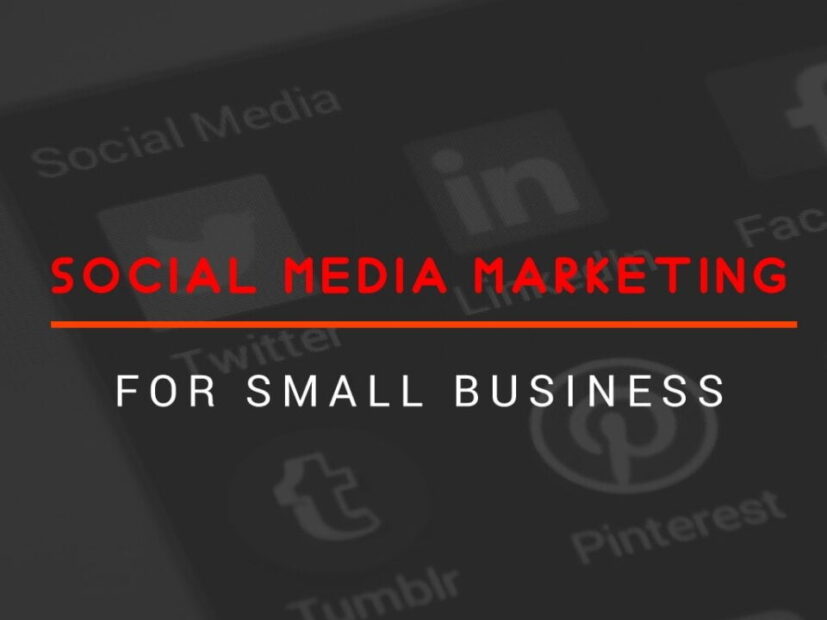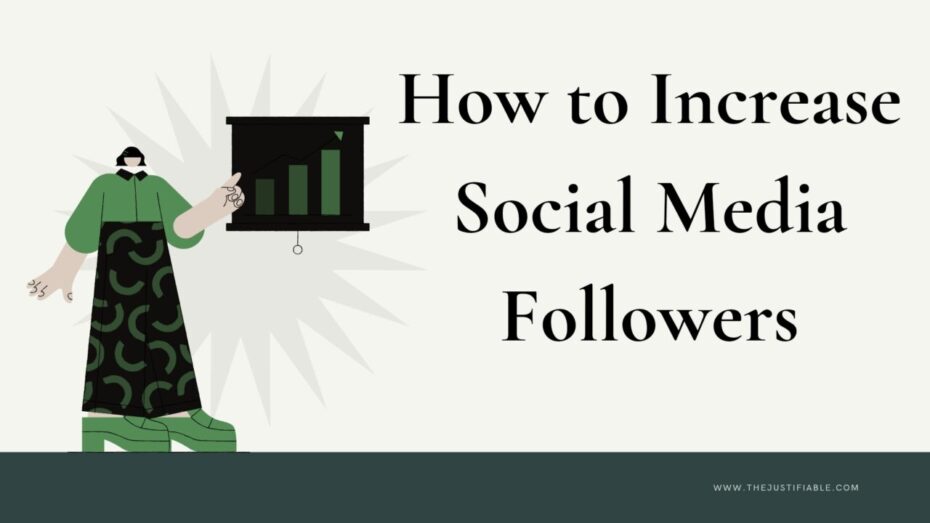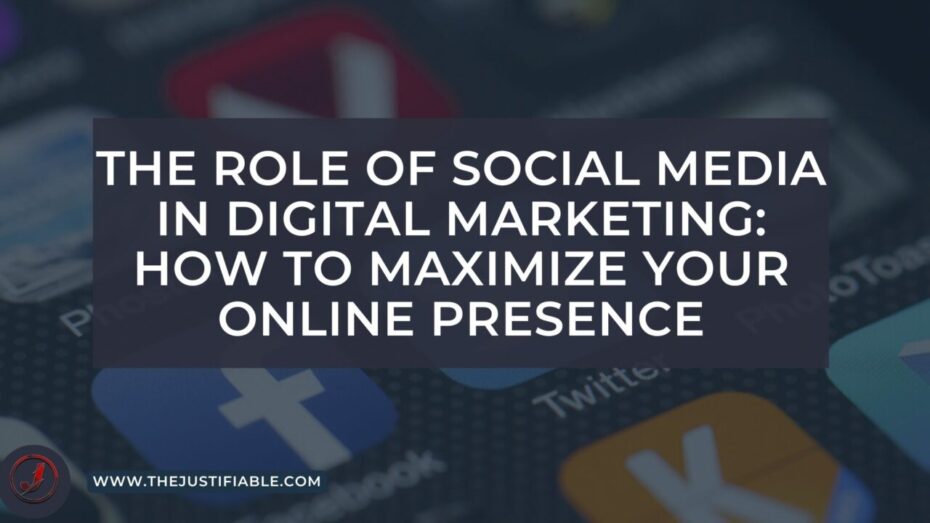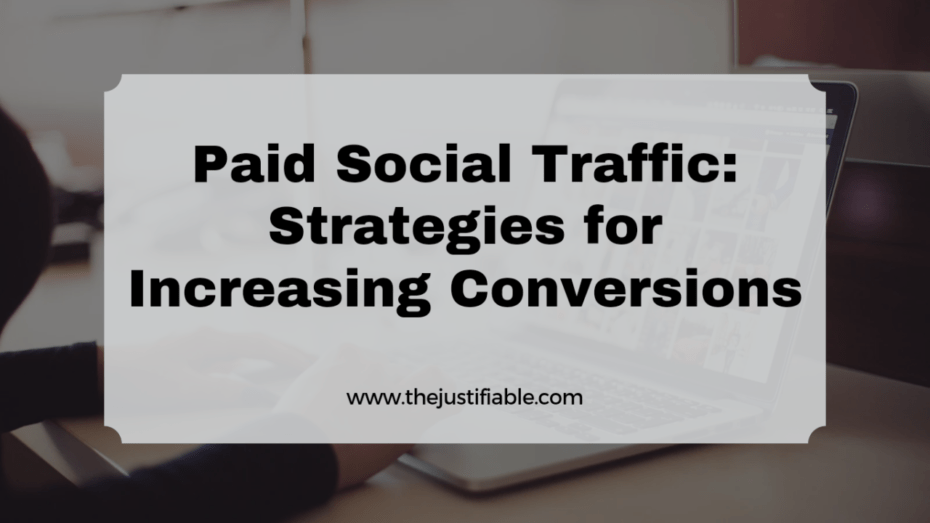Disclosure: This post contains affiliate links, which means that if you click on them and make a purchase, I will receive a commission. Read our Disclaimer for More.
Social media marketing stands at the forefront of a digital revolution, especially for small businesses. But what if I told you that navigating this vast, ever-changing landscape could be your golden ticket to unprecedented growth and visibility? How can small businesses leverage social media marketing to not only survive but thrive in today’s competitive market? And most importantly, how can you do this without falling into the trap of sounding like every other brand out there?
My recommendation for small business owners is to approach social media marketing with a clear plan and an open mind. I think the most effective strategies are those that focus on engagement rather than sales, community building over advertising, and authentic storytelling instead of generic posts. This approach not only enhances your brand’s presence online but also drives real, tangible results. Let’s dive deeper into how you can harness the power of social media marketing to elevate your small business.
Maximizing Your Brand’s Visibility with Social Media Marketing
Did you know that over 3.6 billion people use social media worldwide? This staggering statistic highlights the unparalleled opportunity social media marketing presents for small businesses aiming to boost their visibility. In a digital era where every scroll brings a new story, standing out is more crucial than ever. But fear not, because with a strategic approach, the vastness of social media becomes your playground, not your battleground.
In my view, the essence of maximizing your brand’s visibility lies in understanding the nuanced needs of your audience and meeting them where they are. This means crafting content that not only catches the eye but also speaks directly to the hearts and minds of your followers. I strongly believe that authenticity is key; it’s what separates memorable brands from those that fade into the background. By maintaining a consistent voice and brand message, you create a sense of familiarity and trust among your audience, which in turn amplifies your visibility across various platforms.
Moreover, my recommendation for small businesses is to stay agile and adapt to the ever-changing social media landscape. This involves keeping an eye on emerging trends and platform updates, which can offer new avenues for visibility. From my perspective, embracing innovation and being willing to experiment with new content formats can significantly elevate your brand’s presence on social media. Now, let’s delve into two critical strategies: crafting engaging content and leveraging hashtags.
Crafting Engaging Content to Skyrocket Engagement
Engagement is the currency of social media. But what does it take to create content that not only engages but also compels your audience to interact with your brand? From my estimation, it starts with understanding your audience’s interests, pain points, and what they value most. Creating content that addresses these aspects can transform passive scrollers into active participants in your brand’s story.
My advice? Focus on creating value. Whether it’s informative blog posts, captivating videos, or eye-catching infographics, your content should aim to solve problems, entertain, or inspire your audience. According to recent studies, content that evokes strong emotions, be it joy, curiosity, or even surprise, tends to perform better in terms of engagement. It seems to me that when your content resonates on a personal level, your audience is more likely to share it, comment on it, and engage with it more deeply.
I would say that incorporating user-generated content (UGC) can also be a game-changer. From my perspective, UGC not only diversifies your content but also builds community by showing your customers that you value their voice and experiences. This reciprocal relationship fosters a deeper connection and, most importantly, boosts engagement, making your brand more visible in the crowded social media space.
Leveraging Hashtags for Broader Reach
In my opinion, hashtags are one of the most underutilized tools in a small business’s social media marketing arsenal. They have the power to dramatically extend the reach of your content beyond your existing followers to a wider audience interested in your niche. My recommendation is to use a mix of broad, trending hashtags and more specific, niche ones to cast a wide yet targeted net.
I believe that researching and selecting the right hashtags requires a strategic approach. It’s important to look at what hashtags your competitors are using, what hashtags are trending in your industry, and which ones resonate with your target audience. My advice is to create a list of hashtags for different types of posts, keeping in mind the relevancy and popularity of each hashtag.
From my experience, consistency in using hashtags can lead to greater visibility and discoverability over time. However, it’s crucial to avoid the temptation of overstuffing your posts with irrelevant hashtags, as this can dilute your message and turn off potential followers. Instead, focus on a balanced and thoughtful selection of hashtags that enhance your content’s reach while keeping it aligned with your brand’s message and values.
Cost-Effective Strategies in Social Media Marketing
In the dynamic realm of social media marketing, finding cost-effective strategies is akin to discovering hidden treasures. These strategies empower small businesses to maximize their online presence without draining their budgets. It’s a common misconception that impactful social media marketing requires hefty financial investments. In reality, with smart planning and the right tools, businesses can achieve significant growth. From my perspective, the secret lies in leveraging both the free resources available and making judicious choices when it comes to paid promotions.
I believe that for small businesses, the ability to navigate the vast array of options for marketing on social media platforms can be a game-changer. This involves a blend of creativity, strategic planning, and a deep understanding of your audience. According to various studies, content that resonates with the audience on a personal level not only enhances engagement but also increases the likelihood of conversion, all while keeping costs low. From my point of view, the focus should always be on quality over quantity; a well-thought-out post that speaks directly to your target audience can be more valuable than numerous posts that fail to engage.
Most importantly, I suggest staying abreast of the latest trends and algorithm changes on your chosen platforms. Social media is ever-evolving, and what worked yesterday may not work today. Keeping informed and being willing to adjust your strategies can lead to cost-effective marketing successes. Now, let’s delve into how utilizing free tools and smart budget allocation for paid ads can further optimize your social media marketing efforts.
Utilizing Free Tools for Impactful Presence
In today’s digital landscape, numerous free tools can amplify your social media marketing without costing a dime. My recommendation is to start with the analytics tools provided by the social media platforms themselves. These tools offer invaluable insights into your audience’s behavior, preferences, and engagement patterns. Armed with this data, you can tailor your content to better meet the needs of your audience, thereby enhancing your brand’s presence.
I strongly believe in the power of scheduling tools. Many platforms offer the ability to schedule posts in advance, enabling you to maintain a consistent online presence without needing to be constantly active. This not only saves time but also allows for the strategic planning of content releases to coincide with peak engagement times.
Moreover, my advice is to explore content creation tools that are available for free. These can help you create visually appealing posts, stories, and videos that grab attention and encourage interaction. From my experience, content that stands out visually can significantly boost your brand’s visibility and engagement on social media.
Smart Budget Allocation for Paid Ads
When it comes to paid advertising on social media, my recommendation is a strategic approach to budget allocation. It’s crucial to start with a clear understanding of your campaign goals and target audience. This enables you to use your budget more effectively, focusing on ads that are most likely to convert. According to various insights, targeting your ads based on user interests, behaviors, and demographics can significantly increase your return on investment.
I would say that experimenting with different ad formats and platforms is essential to find what works best for your brand. Small initial investments in various formats can help you identify the most effective approach before scaling up your spending. Remember, the goal is to achieve maximum impact with minimal expenditure.
From my perspective, monitoring and adjusting your campaigns in real time is key to smart budget allocation. Social media platforms provide tools to track the performance of your ads, allowing you to tweak your strategy as needed. This might mean reallocating your budget towards the most successful campaigns or even pausing underperforming ads. In my estimation, this agile approach to budget management is critical for maximizing the efficiency of your social media marketing spend.
Building a Loyal Community Through Social Media Marketing
“Alone we can do so little; together we can do so much.” – Helen Keller. This sentiment rings especially true in the realm of social media marketing, where building a loyal community around your brand can significantly amplify your impact. The essence of social media is not just in broadcasting messages but in fostering a sense of belonging and connection among your audience. It’s about turning casual followers into a tight-knit community that supports and advocates for your brand.
To cultivate this kind of loyalty, transparency and consistency are key. I believe that when brands are open about their values, mission, and the stories behind their products or services, they attract an audience that shares those ideals. This mutual understanding and shared purpose are the bedrocks of a loyal community. Furthermore, consistent engagement on social media doesn’t just keep your audience informed; it makes them feel valued and heard. In my opinion, this is critical for nurturing a sense of community and belonging.
Most importantly, creating a community is not about pushing sales but about creating value for your followers. Whether it’s through educational content, inspirational stories, or simply entertaining posts, each piece of content should aim to enrich your audience’s social media experience. From my perspective, when your brand becomes a source of valuable information or positivity, followers are more likely to develop a strong, emotional connection to your brand. This, in turn, transforms them into advocates who share your content, recommend your products or services, and contribute to the growth of your community.
Engaging with Your Audience Regularly
“Content is king, but engagement is queen, and the lady rules the house!” This playful adage underscores the immense value of engaging with your audience on social media. Regular interaction doesn’t just signal to your followers that you’re active; it shows that you care about their opinions, questions, and experiences. I recommend responding to comments, messages, and mentions as promptly as possible. This not only fosters a lively and interactive social media presence but also builds trust and loyalty among your followers.
In my estimation, asking for feedback and encouraging user-generated content can be incredibly effective. This approach not only provides you with valuable insights into your audience’s preferences but also makes your followers feel like they are an integral part of your brand’s journey. From my view, highlighting stories, reviews, or content created by your followers on your platforms can significantly boost engagement and deepen the community feel.
Additionally, hosting regular events like Q&A sessions, live streams, or contests can keep the engagement levels high. I would say that these activities not only bring fun and excitement to your social media channels but also give your followers a reason to keep coming back. It seems to me that when your audience anticipates your next post or event, you’ve successfully created a vibrant, engaged community.
Creating a Brand Persona That Resonates
“Your brand is what other people say about you when you’re not in the room,” Jeff Bezos once said, highlighting the importance of a brand persona. In the context of social media marketing, creating a brand persona that resonates with your target audience is crucial for building a loyal community. I think that a well-defined brand persona should reflect the core values, tone, and aesthetics that appeal to your ideal customer. This persona becomes the voice of your brand across all social media platforms, ensuring consistency and relatability.
I strongly believe that storytelling is a powerful tool in making your brand persona relatable. Sharing the origins of your brand, the challenges you’ve faced, and the milestones you’ve achieved allows your audience to see the human side of your business. In my view, this transparency builds empathy and loyalty as followers begin to see themselves as part of your brand’s story.
Furthermore, my advice is to tailor your brand’s persona to suit the preferences of your target audience while remaining true to your brand’s identity. It’s about striking the right balance between being relatable and maintaining your brand’s uniqueness. From my perspective, when followers feel a deep connection with your brand’s persona, they are more likely to engage, advocate, and remain loyal over time.
Analyzing Your Social Media Marketing Performance
Analyzing your social media marketing performance is akin to a gardener assessing the health of their plants. Just as a gardener needs to understand the signs of growth, health, and the areas needing attention, a social media marketer must gauge the success of their efforts through careful analysis. In the flourishing garden of social media, understanding which plants (or strategies) are thriving and which are wilting can significantly impact your garden’s (or business’s) overall health and productivity.
In my view, the first step to effective analysis is establishing clear objectives for what you aim to achieve through your social media efforts. Whether it’s increasing brand awareness, boosting sales, or engaging with your community, having specific goals allows you to measure success more accurately. I strongly believe that with the vast amount of data available, focusing on the metrics that directly correlate with your goals is essential. This not only simplifies the analysis process but also provides more meaningful insights into your performance.
Moreover, regular monitoring and analysis of your social media activities enable you to understand the preferences and behaviors of your audience better. I think this continuous feedback loop is invaluable. It allows you to refine your content, optimize your posting schedule, and enhance your overall strategy to better meet the needs of your audience. Most importantly, it’s about being agile and responsive. In my estimation, the ability to quickly adapt based on performance data is a key competitive advantage in the fast-paced world of social media marketing.
Key Metrics to Track Your Success
In the realm of social media marketing, not all metrics are created equal. I recommend focusing on a few key performance indicators (KPIs) that align with your business objectives. Engagement rate, for example, is a vital metric because it shows how actively involved your audience is with your content. It’s not just about the number of likes or shares; it’s about understanding the depth of interaction and the connection your audience has with your brand.
Reach and impressions are also critical metrics. From my perspective, they provide insight into the visibility of your content and how far your message is spreading. However, I would say that while reach gives you the number of unique views, impressions can help you understand how often your content is viewed, offering clues about its resonance with your audience.
Conversion rate is another essential metric, especially if one of your primary goals is to drive specific actions, such as sales or sign-ups. My advice is to closely monitor this metric to assess the effectiveness of your social media marketing in achieving your business objectives. It seems to me that tracking these key metrics can give you a comprehensive view of your performance and guide your future strategies.
Adjusting Strategies Based on Data Insights
The true power of analytics lies in its capacity to inform strategy adjustments. I believe that the insights garnered from analyzing key metrics should directly influence your social media marketing strategies. For instance, if you notice that certain types of content consistently perform better in terms of engagement and conversions, it would seem logical to produce more of that content type.
I recommend conducting A/B testing on different aspects of your social media posts, such as headlines, images, and posting times, to see what resonates best with your audience. From my point of view, this methodical approach allows you to refine your strategy with precision, ensuring that your efforts are as effective as possible.
Moreover, I think that being open to pivoting your strategy based on data insights is crucial. If the data shows that your current approach isn’t working as well as expected, don’t hesitate to innovate and try new tactics. My impression is that social media is an ever-evolving landscape, and what works today may not work tomorrow. Therefore, staying adaptable and responsive to the insights your data provides is key to sustaining and enhancing your social media marketing performance.
Innovative Social Media Marketing Trends to Follow
In the fast-paced world of digital marketing, keeping an eye on the latest trends is not just beneficial; it’s essential. Just as fashion trends come and go, so do social media marketing strategies. Staying ahead of the curve can give your small business a significant advantage, allowing you to connect with your audience in new and exciting ways. From my point of view, innovative trends offer a glimpse into the future of customer engagement and brand storytelling.
One trend that I strongly believe in is the integration of artificial intelligence and machine learning into social media strategies. This technology can personalize user experiences, making your content more relevant to each member of your audience. Furthermore, as voice search becomes increasingly popular, optimizing your content for voice search queries is becoming crucial. I suggest incorporating conversational keywords and phrases into your social media content to ensure visibility in voice search results.
Most importantly, sustainability and social responsibility are becoming key factors in consumer decisions. My advice is to highlight your brand’s commitment to these values through your social media presence. This not only improves your brand image but also resonates with a growing segment of consumers who prefer to support brands with a purpose. In my estimation, showing your brand’s human side and commitment to positive change can significantly enhance customer loyalty and engagement.
Tapping Into the Power of Stories and Live Videos
In the realm of social media, stories and live videos have emerged as powerful tools for real-time engagement. I believe that these formats offer a unique opportunity to connect with your audience on a more personal level. Stories, with their ephemeral nature, create a sense of urgency, encouraging users to view them before they disappear. This can be particularly effective for promotions, behind-the-scenes content, or quick updates.
Live videos, on the other hand, allow for direct interaction with your audience in real-time. I recommend using live videos for Q&A sessions, product launches, or any event where engaging directly with viewers adds value. From my perspective, the authenticity and immediacy of live videos can significantly boost audience engagement and foster a sense of community around your brand.
Additionally, it seems to me that incorporating user-generated content in stories and live videos can further enhance engagement. Encouraging your audience to share their own experiences related to your brand and featuring these stories on your channels not only diversifies your content but also builds trust and loyalty. My advice is to regularly invite your audience to participate in your story-telling process, creating a more inclusive and engaging brand experience.
Embracing New Platforms for Early Advantage
While established social media platforms like Facebook, Instagram, and Twitter remain important, I’m of the mind that exploring emerging platforms can offer early-mover advantages. Platforms like TikTok, Clubhouse, and others have shown us that the social media landscape is continuously evolving, with new opportunities for innovative marketing strategies.
I hold the opinion that being among the first brands to establish a presence on up-and-coming platforms can significantly increase your visibility and engagement. Early adoption allows you to experiment with different content types and strategies before the platform becomes saturated. My recommendation is to closely monitor social media trends and be open to testing new platforms that align with your target audience’s preferences.
From my experience, adapting your content strategy to fit the unique features and audience of each new platform can be a game-changer. Whether it’s short-form videos, audio-only content, or another novel format, each platform offers a unique way to tell your brand’s story. I suggest looking at these new platforms not just as promotional channels but as opportunities to connect with your audience in innovative and meaningful ways.
Empower Your Small Business with Strategic Social Media Marketing
In the vibrant tapestry of today’s digital marketplace, social media marketing emerges not just as a tool but as a catalyst for small business growth and connection. The journey through the evolving landscape of social media can be complex, yet, it holds the promise of unparalleled engagement and community building. From what I’ve seen, the brands that navigate this path with intention, creativity, and authenticity are the ones that truly stand out.
I believe that the essence of empowering your small business through social media marketing lies in strategic planning and execution. It’s about understanding not just where to speak, but how to speak in a way that resonates with your audience. My advice to small business owners is to approach social media not as a one-way advertising channel but as a dynamic platform for dialogue and relationship building. According to my experience, the most successful brands are those that listen as much as they speak, adapting their strategies to meet their audience where they are.
Most importantly, I would say that patience and persistence are key. The fruits of social media marketing don’t always show overnight. It requires a consistent effort, a willingness to learn from the data, and an openness to evolve. From my perspective, small businesses have a unique advantage in this realm—their flexibility and ability to create genuine, personal connections can make their social media presence truly powerful.
My final recommendation? Embrace the opportunities that social media marketing offers with an open heart and a strategic mind. The potential to grow your brand, connect with your community, and achieve your business goals is immense. The future is bright for small businesses ready to make their mark through strategic social media marketing.






